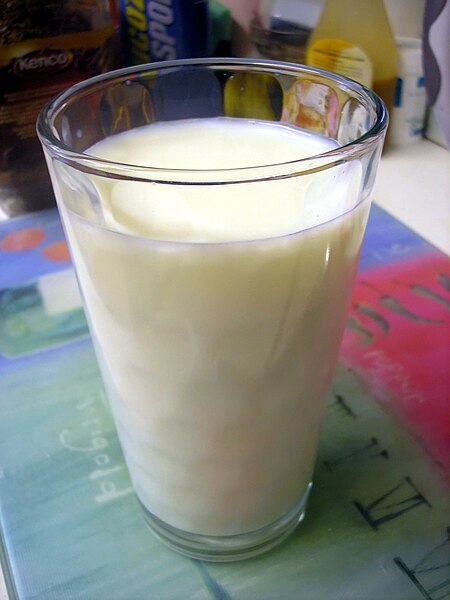8 Answers
Milk is a white liquid produced by the mammary glands of mammals. It is the primary source of nutrition for young mammals before they are able to digest other types of food. Early-lactation milk contains colostrum, which carries the mother's antibodies to the baby and can reduce the risk of many diseases in the baby.
Milk derived from cattle species is an important food. It has many nutrients. The precise nutrient composition of raw milk vary by species and by a number of other factors, but it contains significant amounts of saturated fat, protein and calcium as well as vitamin C. Cow's milk has a pH ranging from 6.4 to 6.8, making it slightly acidic.[1][2]
Throughout the world, there are more than 6 billion consumers of milk and milk products, the majority of them in developing countries. Over 750 million people live within dairy farming households. World's dairy farms produced over 710 million tons of milk in 2010.[clarification needed] India is the world's largest producer and consumer of milk, yet neither exports nor imports milk. New Zealand, EU-15 and Australia are the world's three largest exporters of milk and milk products. China, Mexico and Japan are the world's largest importers of milk and milk products. Milk is a key contributor to improving nutrition and food security particularly in developing countries. Improvements in livestock, dairy technology and milk quality may offer the most promise in reducing poverty and malnutrition in the world.[3]
| 13 years ago. Rating: 5 | |

 bexy
bexy
 ROMOS
ROMOS
 melandrupert
melandrupert

 lewboy
lewboy
 bexy
bexy
 valR
valR




